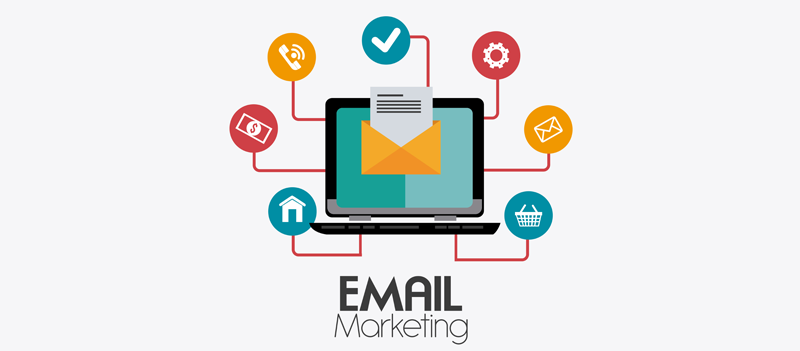15 Marketing KPIs You MUST Track TODAY
Marketing KPIs (key performance indicators) are numerical marketing measurements that firms use to track their progress toward a set objective through their marketing channels.
It is critical to select effective marketing KPIs appropriate for your company. On the other hand, tracking the wrong KPIs will not produce actionable results and will significantly waste time.
To select effective marketing KPIs, you must consider your company’s primary business. You should also decide whether it is more important for your SaaS to sell more products to develop leads or subscriptions? All of this information can help you select marketing KPIs that are appropriate for your company’s goals and surroundings.
In this article, I’ll focus on important KPIs as a marketing plan for your SaaS.
What are marketing KPIs?
A marketing KPI (key performance indicator) is a quantifiable value used by firms to assess the impact of marketing efforts while also assisting professionals in monitoring the effectiveness of various marketing channels to develop effective budget spending tactics. Many marketing KPI examples are available today, many of which are likely to apply to your company’s marketing efforts. If you do a basic Google search for marketing KPIs,’ you’re likely to come up with a jumble of information that can help you better your marketing approach.
Marketing KPIs differ from standard marketing indicators in a few ways. They display results for specific initiatives and campaigns. Progress is linked to KPIs. Marketing metrics should be tracked regularly to determine how healthy marketing initiatives are performing and whether they are contributing to the achievement of KPIs and business objectives.
In addition to the info about marketing KPIs;
KPIs are significant in marketing since they help you define:
- Where are you going?
- The best way to get there
- If you arrived at your desired location how to take a more efficient path next time
It’s tough to design effective marketing strategies and evaluate marketing success without KPI is toughs.
KPIs can assist you in showing senior management and clients the worth of your marketing activities. You may include KPIs in a marketing report template to highlight your outcomes and marketing ROI
Learn more about marketing analytics.
How can you pick the right marketing KPIs for your SaaS?
KPIs are measurable metrics or data points used to assess how well your firm is performing with a set of objectives. A KPI could be tied to your aim of growing sales, increasing the return on investment of your marketing activities, or enhancing customer service, for example.
What are your company’s objectives? What are your marketing department’s top priorities? Have you found any extensive areas that need to be improved or optimized?
By answering these questions, you’ll be one step closer to determining the correct KPIs for your company.
Rather than selecting hundreds of indicators to track and report on, concentrate on just a handful of the most important.
If you keep track of too many KPIs, you risk being overwhelmed by the information and losing focus. As you can expect, every company, sector, and business strategy is unique, so determine the precise number of KPIs you should have. Aiming for two to four KPIs per objective is a decent quantity to strive for. Sufficiently have an accurate feel of where you stand, but not so many that you lose track of what’s essential.
The most helpful KPIs may vary depending on your company’s stage – startup vs. enterprise – with specific indicators being more significant than others.
Early-stage firms often prioritize data linked to business model validation, but more established enterprises prioritize measures such as cost per acquisition and customer lifetime values.
Depending on the demands of your SaaS, you may pick from a variety of KPIs. However, I will present you with the most relevant 15 marketing KPIs.
Also, check out here for Product Management KPIs to track for your SaaS!
Top 15 Marketing KPIs
1. Customer Acquisition Cost (CAC)
The overall sales and marketing expense required to acquire a new client is customer acquisition cost. All program and marketing expenditures, wages, commissions, technology, software, and any overhead related to a lead becoming a client are included.
It mainly addresses the following question: How much does it cost you to acquire a consumer via digital versus outbound marketing?
You’ll also need to define the time range in which you’ll analyze this cost while computing this statistic (month, quarter, year).
You may effectively account for new sales and assign specific budgets for each campaign by estimating the expenses connected with your digital marketing.
If your organization primarily uses digital marketing, you may split it down further by campaign kinds, then evaluate the performance and profitability of each activity. When you understand this, you can apply actions that will help you improve over time.
Calculating a customer’s lifetime value entails calculating all sales that your average customer has initiated throughout your relationship. Spending extra time on activities that can boost your conversion rates is one method to lower your client acquisition expenses. Make sure the text is as straightforward as possible and demonstrates your capacity to ease the pain points of your potential consumers.
2. Customer Lifetime Value (LTV)
LTV is a fantastic approach to determine your company’s return on investment. It’s also an excellent metric for planning future corporate objectives.
In short, Customer Lifetime Value is a forecast of a company’s profitability throughout its relationship with each customer.
Increasing the Customer Lifetime Value allows you to keep in touch with your consumers, minimize disengagement, and improve satisfaction. It will also assist you in determining an acceptable acquisition cost.

CLV may be calculated in a variety of methods. Indeed, depending on their goals or target segmentation, each company is likely to use various factors in its calculations. However, subtracting the initial cost of gaining a client from the income earned from that customer is the most effortless approach to compute CLV.
3. Customer Retention
Customer retention is an important KPI for marketers to measure since the data can be used in messaging for marketing efforts.
Furthermore, this measure aids in better understanding your clients, allowing you to better sell to them.
Leadership frequently believes that we need to increase retention over a set amount of time to see a drop in turnover. This is where many SaaS companies go astray. They believe that reducing churn will increase retention or vice versa.
When we reduce churn, we can easily enhance CLTV in the short run. This isn’t always negative, but aiming for retention is stepping forward.
Increasing client retention by only 5% increases 25-95 percent profitability. Wee consider CLV, customer success, NPS, and other factors throughout time regarding retention. We can upsell, cross-sell, and prolong average contract value by focusing on client retention.
4. Return on Investment (ROI)
The return on investment (ROI) is calculated by comparing the income generated to the cost of operating the campaign. Successful marketers are motivated to link their time, energy, and advertising dollars to results that help their organization expand.
This KPI answers the question, “Are we getting a return on the time and money we spend planning and implementing our marketing campaigns?”
5. Return on Ad Spend (ROAS)
Return on ad expenditure is a more specific KPI for determining the performance of your marketing campaigns.
This metric compares the revenue earned per dollar spent on advertising to the revenue generated per dollar spent on advertising. Usually, it’s a proportion.
Let’s imagine you made $20 for every $5 you spent on a marketing effort. That indicates your campaign’s ROAS is 20:1.
6. Organic Traffic
It’s critical to track the results of your SEO work. To accomplish so, you’ll most likely monitor organic traffic and keyword performance KPIs.
You may use an SEO tool to examine how well your firm ranks for specific keywords on search engines.
This KPI will inform your whole organic and SEO approach.
7. Website Visitors
Finding out who your website visitors are, where they came from, and what they did after they arrived at your site is the first step in getting to know them. All of this data can assist you in determining one crucial piece of information: what they want from you. Knowing this allows you to anticipate your future clients’ demands, which is exactly what marketing is all about.

However, the phrase “website traffic” is too broad. The concept of website traffic encompasses many factors, many of which are highly quantitative and strongly linked to engagement. Users, page visits, sessions, bounce rate, and so forth are all included.
8. Traffic-to-Lead ratio (New Contact Rate)
Understanding your website traffic, especially where it comes from — whether it’s organic, direct, social media, or referrals.
It’s crucial to figure out which pages have the most effective bounce rate and the lowest view-to-contact rate before tweaking your content. Armed with this knowledge, you’ll be able to determine which pages to optimize first.
9. Marketing Qualified Leads (MQL)
An MQL is a leader who has expressed interest in your firm and who, if nurtured, might develop into a more serious possibility.
This is an excellent KPI to track since it allows your marketing team to see how many leads they generate.
Your marketing team may also track how many MQLs become SQL and eventually customers by comparing them to qualified sales leads (see below).
10. Sales Qualified Leads (SQL)
If an MQL is appropriately fostered, it will turn into a sales-qualified lead. An SQL is a potential client eager to speak with a member of your sales staff.
Typically, your marketing department has conducted research and evaluated these leads.
This KPI is beneficial since it allows your marketing team to see how many leads speak with your sales staff.
11. MQL to SQL Ratio
MQL to SQL conversion rate is a sales metric that measures the proportion of marketing qualified lead converted to sales qualified leads.
It’s one of the most accurate ways to assess lead quality and a good indicator of how successfully your marketing team qualifies and screens leads to maintain a high-quality pipeline.
![MQL to SQL: The Qualification Process [Infographic] - Marketing Insider Group](https://marketinginsidergroup.com/wp-content/uploads/2019/06/banner-mql-to-sql.png)
This metric measures how well the marketing and sales teams work together. This ratio will be high if these two teams have clear communication and understanding.
However, there is sometimes a mismatch between these teams, resulting in disagreements about the quality of the leads generated by marketing or the attention they receive once they are in the hands of sales.
12. Email Marketing Open Rate and Click-Through Rate
Other marketing KPIs to consider when evaluating your marketing activities include the results of your mailing campaigns. To get a good picture of your mailing strategy, you’ll need to take a few steps.
The percentage of persons that opened an email campaign is known as the open email rate. This metric enables you to assess the relevancy of your email subject lines and the quality and engagement of your mailing list.
To find the email open rate %, divide the number of emails opened by the total number of emails sent and multiply by 100.
For example, if you send an email to 100 people and only 70 open it, your email available rate is 70%.

The percentage of persons who clicked on a link in an email is the click-through rate. This metric allows you to assess the effectiveness of your call-to-action. To determine the click-through rate of your mailing campaign, divide the number of links clicked by the number of emails sent and multiply by 100.
For instance, if you send an email to 100 people and 20 of them click on a link in the message, your click-through rate is 20%.
13. Social Media Reach and Engagement
Because it allows you to disseminate information and communicate with existing and future consumers, tracking your progress is valuable to assess this KPI (think followers on Twitter and Likes on Facebook). Both social networking networks have tracking and analysis built-in, making it relatively simple to obtain this data when needed.

You may also monitor engagement by looking at data such as lead conversions, customer conversions, and the proportion of site traffic attributed to your social media activities. Remember that not all social media platforms will benefit your company, so keep track of the ones that are most important to you and your customers.
14. Sales Revenue and Growth
This straightforward KPIt allows you to track your company’s success in producing sales revenue. You can figure out your company’s growth patterns and estimates using a variety of data factors.
It’s beneficial from a top-down perspective, as you measure your company’s overall progress, and on a more personal level, as you can use it to establish tailored objectives for your team members. This is a fantastic approach to keep your company’s growth and, by extension, revenue going strong.
15. Opportunity-to-Win Ratio
This ratio gives you a simple number to use to figure out how successful you are at turning qualified leads into closed sales. You may use this information to ask your sales team: Who is good at creating opportunities but not so good at closing transactions?

Who among the group can complete a deal with almost anyone yet does not consider one of their strong suits first? This is essential information that you can use to train your sales force in the areas where they will be most needed, both individually and collectively.
Conclusion
You may better understand your company’s health by measuring the correct KPIs. You can observe the ROI provided by these two teams when you establish KPIs that correspond with your sales and marketing methods.
One of the most appealing aspects of the SaaS business model is that the metrics for success are similar across industries. There isn’t much difference between B2C and B2B SaaS KPIs. However, there are still decisions to be taken.
When creating your performance indicators, make sure they may assist you in achieving two goals: First and foremost, SaaS marketing KPIs should give a quick snapshot of overall business health.
Second, throughout your yearly planning season, they should make it simple to identify particular targets and investments that will significantly influence net profit. That is the most critical factor.
Marketing KPIs are the measurements that your company monitors to assess the overall relative performance of its marketing and sales initiatives.
There is a slew of useful KPIs to keep tracking. I’ve included 15 of the most helpful ones in this article, including CAC, LTV, ROI, ROAS, traffic and visitors, and so on.
Using an analytics platform like HockeyStack, Adjust, or Google Analytics to measure KPIs is frequent.



